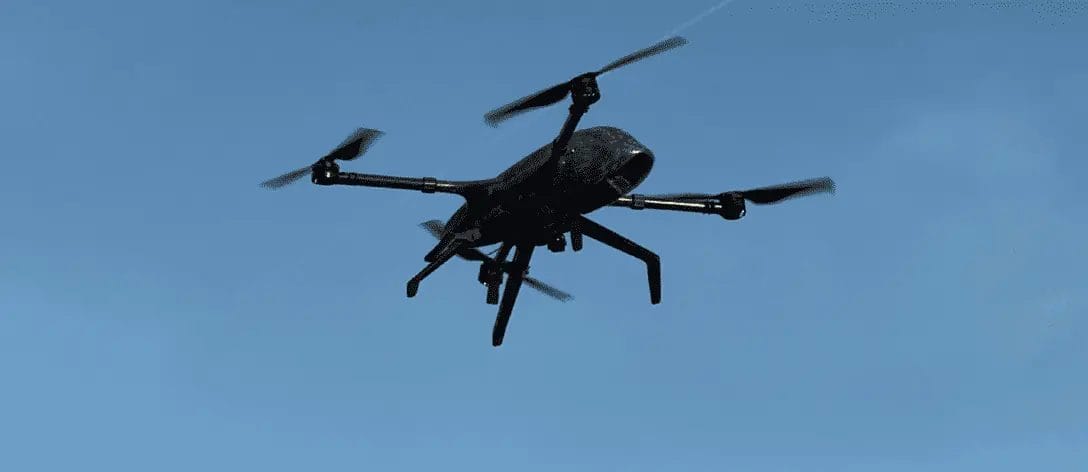Andrea Lapiana, Engineering Lead for EuroLink Systems, explains how the company’s Beluga drone offers an optimal solution to support various search and rescue scenarios.
Using the Beluga Drone for Search and Rescue
Abstract
Search and rescue operations have benefited from the use of UAVs to scan the target environment, collect critical data and be instrumental in completing successful mission requirements. In most cases, this operational procedure minimizes the time and effort to locate a victim or other target, which is key to overall survivability. This is particularly evident in contested and harsh environments, where conventional approaches may be less effective.
A well-designed, UAV is essential to this application, although the key elements to effective search and rescue revolve around the design of on-board search algorithms, the quality of sensory data collected, energy considerations relevant to mission parameters, environmental challenges (including wind, rain, snow, fog, dense forests, landscape debris, other obstacles, etc.), and the level of interaction and coordination required, between UAV key operators and other platforms/vehicles being utilized to support the overall mission.
These factors are not only vital to the selection of the class of UAV needed, they are key elements that support the decision-tree for each search and rescue mission.

Overview
Search and Rescue operations vary depending on the circumstances, although in most cases the common elements revolve around a set of constraints. Time is critical – delays can impact mission success and jeopardize lives. Typically, these missions are conducted in adverse conditions – contested environments, disaster scenarios, hostile circumstances and revolve around Emergency situations that require swift action.
Industry statistics indicate that conventional means that support search and rescue operations result in an average 20% fatality rate. Further, not to minimize the loss of life, although within the United States (as an example) – the Federal Emergency Management Agency (FEMA) spent $92 Million on search and rescue operations for the tough hurricane-hit areas of Texas, Florida and Puerto Rico. This amplifies the role that UAVs can play in assisting these efforts and FEMA does utilize UAVs to support emergency incident situational awareness, monitor and assess critical infrastructure, provide disaster relief by transporting critical medical supplies to remote locations and provide support at border perimeters.
For incidents like earthquakes, hurricanes and other natural disasters, UAVs can be an integral element of Disaster Recovery Plans. Drones equipped with thermal imaging and multispectral sensors are essential in rescue missions and can scope-out the preliminary situation/landscape, provide continuous monitoring and even detect body heat essential to recovery efforts. Insight can be derived from captured drone data to monitor flood directions, identify at-risk infrastructure and be essential to evacuation efforts. Advanced camera technology can aid rescuers to outline a plan to investigate disaster affected areas.
Aside from the emphasis on aiding those impacted by these disasters, drones can also save the lives of first-responders by scanning areas in advance to identify hot spots and high-impact risks.
UAVs have found their way into Search and Rescue operations and are making a critical difference (cross-Industry). These platforms are becoming more specialized and equipped with advanced technologies and capabilities that map-onto various Search and Rescue scenarios. For organizations developing Disaster Recovery Programs and Plans incorporating drones, as a working element, it will be necessary to outline different scenarios and seek out drones that have the on-board capabilities, configurability and flexibility to meet these challenging demands.

Technical Overview
Beluga™ mini-drones have been designed to meet the performance and efficiency demands of Search and Rescue applications. The high IP rating (up to 67) allows Beluga™ to address a range of scenarios and supports a wind resistance of 50 km/h, resulting in an affordable drone to meet mission requirements.
Beluga™ has on-board, AI algorithms essential to detect and recognize targets, which are key to helping first-responders involved in search operations. The platform hosts many payloads to fit search and rescue scenarios including a radar detector that can catch the reflection of passive objects and trigger an alarm or a multi-catcher payload to find 3G/4G and GSM – critical correlations – between IMSI and IMEI in order to find a specific cellular or forced transmission.
With 100 km/h top speed and 1 hour of endurance with 1.5 kg payload, Beluga™ can support BVLOS operations, in order to maximize air utilization time and provide substantial field coverage. Although Beluga’s™ operating procedures are designed around ease-of-use principles, this platform is made for tough, demanding and challenging applications.
Conclusions and Perspectives
Consistent with the standard approach, EuroLink is ready to customize the system for the target application, which will result in jointly defined, Requirements Definition/SOW. Furthermore, EuroLink is eager to collaborate on overall mission goals, project plan, flight path to target destinations, etc. – to configure the right Beluga™ solution to fit the target need. That includes a demonstration program with actual payload items – common to the application. EuroLink can translate these efforts into Proposals for consideration.